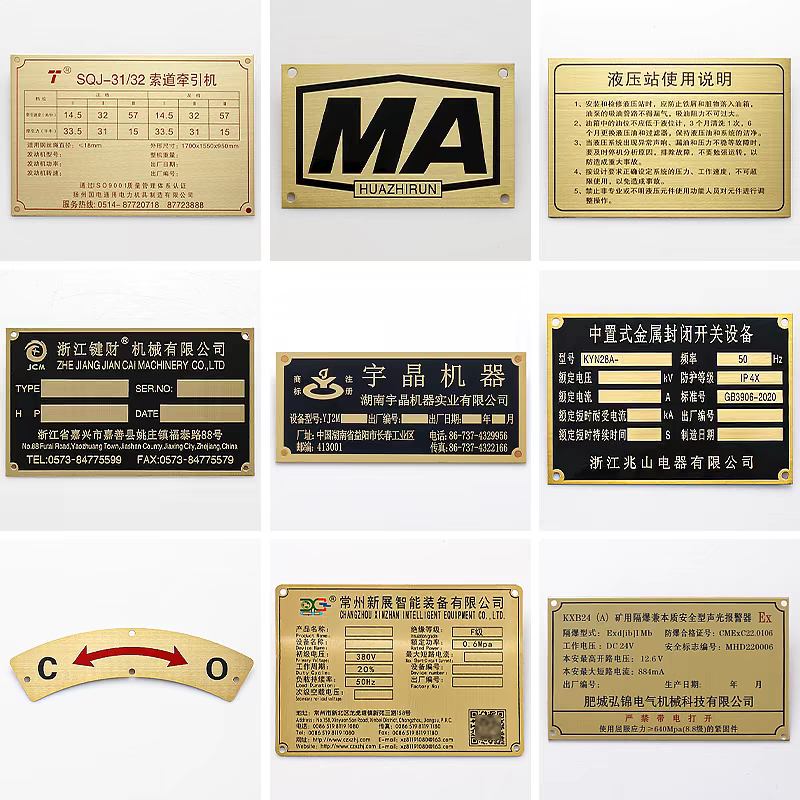In the complex world of chemicals, clear and consistent communication isn't just helpful—it's a critical lifeline for safety and legal compliance. What is required on a chemical label is non-negotiable knowledge for anyone handling substances in industries like manufacturing, healthcare, cleaning, agriculture, or laboratories. These labels are the primary source of immediate hazard information, guiding safe handling, storage, use, and emergency response. Mislabeling or missing information can lead to catastrophic accidents, severe health effects, environmental damage, hefty regulatory fines, and irreparable reputational harm. Understanding precisely what is required on a chemical label empowers everyone in the chemical lifecycle to fulfill their safety responsibilities.

The cornerstone of modern chemical labeling is the Globally Harmonized System of Classification and Labelling of Chemicals (GHS), adopted by OSHA in the US (under the Hazard Communication Standard, HazCom 2012) and by regulatory bodies worldwide. GHS standardizes the criteria for classifying hazards and dictates what is required on a chemical label. Here are the 7 essential elements:
What is Required on a Chemical Label? The 7 GHS Elements
Product Identifier: Naming the Chemical Clearly
This is the fundamental answer to "what substance is this?" when considering what is required on a chemical label. It must unambiguously identify the chemical and match the identifier on the Safety Data Sheet (SDS).
Includes: Chemical name (e.g., "Sodium Hydroxide", "Acetone"), common name/synonym, trade name (e.g., "SuperClean Degreaser"), and often a code number or CAS Registry Number.
Why it's Crucial: Enables precise identification for safe handling, SDS lookup, and emergency response. Knowing the specific product is step one in understanding its hazards.
Supplier Information: Knowing the Source
What is required on a chemical label must include traceability to the responsible party.
Includes: The name of the manufacturer, importer, or distributor; their full mailing address; and an emergency contact phone number (often 24-hour).
Why it's Crucial: Essential for obtaining the SDS, reporting issues, seeking technical support, and providing emergency responders with a direct source for critical advice during incidents.
Hazard Pictograms: Visual Warnings at a Glance
These are the most visually striking elements defining what is required on a chemical label. Nine standardized symbols inside a red diamond convey primary hazards instantly, transcending language barriers.
The 9 GHS Pictograms:
Exploding Bomb (GHS01): Explosives, self-reactives, organic peroxides.
Flame (GHS02): Flammables (gases, aerosols, liquids, solids), pyrophorics, self-heating substances.
Flame Over Circle (GHS03): Oxidizers.
Gas Cylinder (GHS04): Gases under pressure.
Corrosion (GHS05): Skin corrosion/burns, eye damage, corrosive to metals.
Skull and Crossbones (GHS06): Acute toxicity (fatal or toxic).
Exclamation Mark (GHS07): Irritant, skin sensitizer, acute toxicity (harmful), narcotic effects.
Health Hazard (GHS08): Carcinogenicity, mutagenicity, reproductive toxicity, respiratory sensitizer, target organ toxicity, aspiration hazard.
Environment (GHS09): Aquatic toxicity (Note: OSHA does not enforce this pictogram on labels, though it may appear).
Why they're Crucial: Provide immediate, universal recognition of the primary hazards associated with the chemical. They are central to rapid hazard identification.
Signal Word: Indicating Severity Level
This element clarifies what is required on a chemical label regarding the relative seriousness of the hazards.
Includes: Only one word is used per label:
"Danger": Used for more severe hazard categories.
"Warning": Used for less severe hazard categories.
Why it's Crucial: Provides an immediate indication of the potential hazard severity level ("Danger" signals greater risk than "Warning"), helping users prioritize precautions.

Hazard Statements: Defining the Specific Risks
These standardized phrases provide the specific details behind the pictograms and signal word, clearly articulating what is required on a chemical label regarding the nature and degree of the hazards.
Examples: "Fatal if swallowed," "Causes severe skin burns and eye damage," "Highly flammable liquid and vapour," "May cause cancer," "Toxic to aquatic life with long-lasting effects."
Why they're Crucial: Move beyond symbols to clearly state the specific risks (e.g., carcinogenicity, flammability, acute toxicity) posed by the chemical based on its GHS classification.
Precautionary Statements: Guidance for Safe Handling
What is required on a chemical label must include actionable advice to prevent harm. These statements describe recommended measures for safe use.
Grouped into 4 Categories:
Prevention (Pxxx): Measures to prevent exposure/hazardous situations (e.g., "Wear protective gloves/eye protection," "Use only in well-ventilated area," "Keep away from heat/open flames," "Keep container tightly closed").
Response (Pxxx): Actions for accidental exposure, spills, or releases (e.g., "IF ON SKIN: Rinse immediately with plenty of water," "IF INHALED: Remove to fresh air," "In case of fire: Use [specific media] for extinction").
Storage (Pxxx): Safe storage recommendations (e.g., "Store locked up," "Store in a cool, well-ventilated place," "Store away from [other materials]").
Disposal (Pxxx): Safe disposal guidelines (e.g., "Dispose of contents/container in accordance with local/national regulations").
Why they're Crucial: Translate hazard awareness into practical steps for prevention, emergency response, storage, and disposal, directly enabling safe work practices.
Supplemental Information: Adding Necessary Context
While the previous six elements are the core GHS requirements defining what is required on a chemical label, additional non-standardized information is often crucial.
Examples: Expiry date/shelf life, lot/batch number, fill date, net quantity (e.g., weight, volume - often mandatory), directions for use, brief first aid reminders, storage compatibility warnings, physical state/color, and other regulatory information (e.g., NFPA/HMIS ratings in the US, though GHS is primary under OSHA).
Why it's Crucial: Provides vital context for safe handling, storage, tracking, effective use, and overall lifecycle management beyond the standardized hazard communication.
Ensuring Your Labels Meet What is Required on a Chemical Label
Knowing the elements is step one. Ensuring compliance involves:
Accurate Classification: Chemicals must be rigorously classified per GHS criteria based on test data or valid scientific evidence.
Consistency: Label information (product identifier, hazards) MUST perfectly match Sections 1, 2, and 3 of the corresponding Safety Data Sheet (SDS).
Legibility & Durability: Labels must be clearly legible (appropriate font size, color contrast) and durable enough to withstand normal conditions of use, including potential chemical exposure, moisture, abrasion, or UV light, for the container's expected lifetime. Information must remain intact and readable.
Language: Labels must be in the official language(s) of the country where the product is supplied and used. Multilingual labels are common in diverse workplaces.
Placement: Labels must be prominently displayed on the immediate container. For very small containers (<100ml typically), simplified labels (product identifier, pictogram(s), signal word, reference to SDS) are permitted, but the full information must be immediately accessible (e.g., on the outer packaging or a nearby reference sheet).
Chemical Equation Labels vs. GHS Safety Labels
It's vital to distinguish GHS safety labels from chemical equation labels. Chemical equation labels display chemical formulas, reaction equations, states of matter, and reaction conditions. They are valuable tools in educational settings (teaching chemistry principles) and research & development (documenting experiments, process optimization). However, they are NOT a substitute for GHS labels and do not fulfill what is required on a chemical label for hazard communication.
Do NOT use Chemical Equation Labels for:
Basic hazard communication (they lack standardized pictograms, signal words, hazard/precautionary statements).
Communicating hazards to the general public (too complex).
Emergency signage (information is not instantly recognizable or actionable in a crisis).
OSHA HazCom compliance requires GHS labels.
Safety Data Sheets (SDS): The Companion to the Label
While the label provides immediate hazard information, the Safety Data Sheet (SDS) offers comprehensive details. The SDS is mandated alongside the label and has 16 standardized sections covering everything found on the label in more depth, plus critical information like:
First-aid measures (detailed)
Fire-fighting measures
Accidental release measures
Exposure controls/personal protection
Physical/chemical properties
Stability and reactivity
Toxicological information
Ecological information
Disposal considerations
Transport information
Regulatory information
Employees must have immediate access to the SDSs for all chemicals they use.
Understanding precisely what is required on a chemical label – the Product Identifier, Supplier Information, Hazard Pictograms, Signal Word, Hazard Statements, Precautionary Statements, and relevant Supplemental Information – is fundamental. A compliant GHS label is far more than a sticker; it's a vital tool preventing accidents, protecting health, and safeguarding the environment.
Compliance with GHS labeling standards (like OSHA HazCom) is a legal obligation and an ethical imperative. A well-designed, durable, compliant label empowers workers with the knowledge to protect themselves and others. It ensures emergency responders have critical information instantly available. It forms the foundation of an effective Hazard Communication program.
Always inspect chemical labels before use. Ensure they are present, intact, legible, and contain all required elements. If a label is missing, damaged, or unclear, do not use the chemical – report it immediately. Investing in understanding and implementing what is required on a chemical label is a profound commitment to safety in any environment where chemicals are present.





